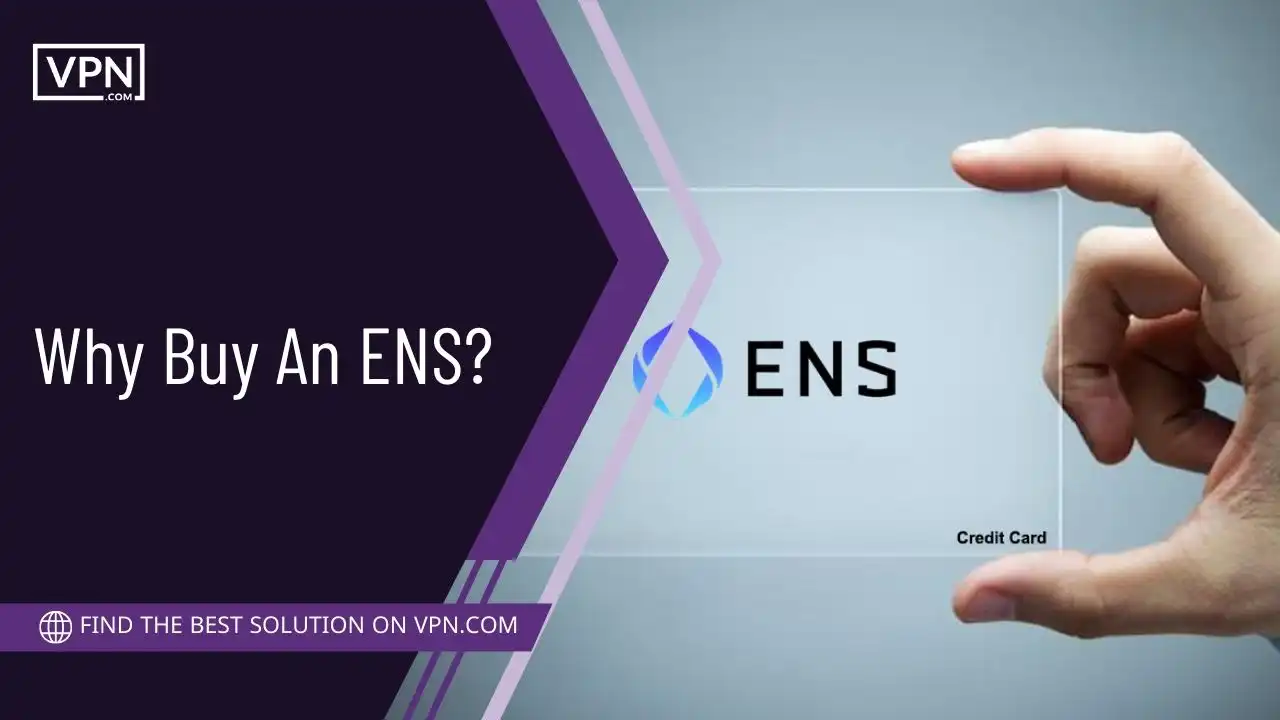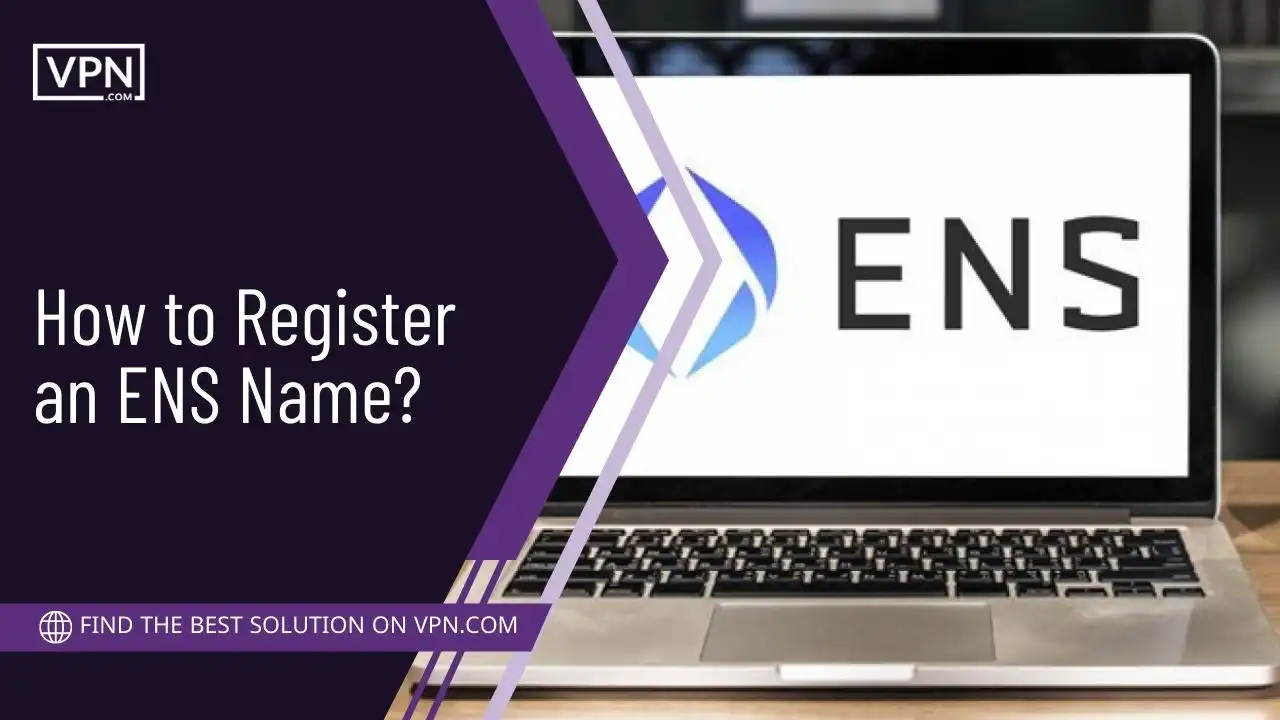What Is The Ethereum Name Service? Best Guide In July 2024

The Ethereum Name Service (ENS) aims to fix the problem. It lets people assign easy-to-remember .eth name replacements for long addresses. This is similar to domain names replacing website IP numbers. With ENS, instead of endless characters, a name like “yourwallet.eth” can send payments.
The much simpler names reduce mistakes, so anyone feels comfortable with blockchain apps. ENS also enables new censorship-resistant websites and security. By making things easier, ENS could help many more consumers, companies, and partners use blockchain technologies.
This article will explain how the ENS system works, how we, as a trusted ENS domain broker, can give wallet addresses easy-to-remember names, and why using simpler names is better for people and the environment.
What Is Ethereum Name Service?
The Ethereum Name Service (ENS) offers an alternative naming system that replaces random combinations of numbers and letters used for blockchain wallet addresses with simple, human-readable domain names like yourname.eth. This makes addresses far easier to convey, use, and manage across decentralized apps.
![What Is The Ethereum Name Service? Best Guide In [month_year]](https://cdn.vpn.com/wp-content/uploads/2019/10/vpn_logo_copy@2x.png)
Sign up with our #1 choice
- Experts in Premium Domains
- Ultra-Secure Transactions
- Commissions Starting at 15%
- Paid $1m for VPN.com
- Only Pay When We Succeed for You
- Completely Confidential Transactions
Ethereum Name Service Working
On a technical level, ENS works by using Ethereum to create records that match readable domain names with their associated wallet addresses. These records linking .eth names to their respective wallet ID codes are stored transparently on Ethereum smart contracts. This allows any software or app built on Ethereum’s blockchain to securely look up an address just from the ENS name.
Improved User Experience
ENS names simplify complex blockchain tasks for everyday users. This includes making digital money transfers using simple names, accessing decentralized websites easily without needing IP addresses, securely encrypting and validating messages between verified owners, and checking public details like social profiles and contact information linked directly to blockchain wallets. By making these processes smoother, ENS opens the door for more people to use blockchain technology.
Why Buy An ENS?

There are many compelling reasons individuals and organizations should consider buying ENS names.
Simplicity
If you don’t have ENS names, then dealing with cryptocurrencies or using blockchain apps means typing long combinations of letters and numbers that look like license plates, not user-friendly addresses.
ENS’s names, which humans can read easily, turn this complexity into simple and memorable words. This stops mistakes from copying and pasting or errors in transferring funds because of typos.
Security
ENS names provide essential identity confirmation for decentralized transactions. When sending payments to a name like “friend.eth,” you can be confident that it matches the correct wallet.
Similarly, accessing a name like “mybank.eth” ensures that you are interacting with a legitimate organization This helps prevent impostor attacks, where individuals might be deceived into visiting fake websites or disclosing private account information, believing it to be for security purposes.
Branding
Unlike the crowded .com domain space, blockchain naming offers chances for brands and individuals to claim memorable namespaces like .eth that closely match their projects and personal ownership. This unity between name and brand, along with the uniqueness, gives ENS owners unmistakable identities.
Reduces Errors
If you mix up the complex strings of uppercase and lowercase letters along with numbers that form crypto addresses, then you might end up losing your funds permanently. ENS solves this problem by giving simple, human-readable names as alternatives.
This significantly reduces the chances of user errors when manually entering the usual random addresses during transactions and website visits.
User Experience
ENS naming conventions simplify the technical complexity of blockchain for everyday users. Instead of struggling with copying and pasting complicated address strings, users can now interact intuitively with easy-to-remember and branded names.
This shift minimizes confusion when navigating decentralized apps. This makes it easier for more people to adopt and use blockchain technology.
Adoption
If more people adopt ENS names and wallets and apps, streamline addresses, then handling cryptocurrencies might become as straightforward as sending emails. This implies that even grandparents can effortlessly send digital money to their grandchildren without any issue.
By eliminating the perplexing combinations of letters and numbers, blockchain usage becomes significantly easier for everyone. Even including those who previously found it too challenging.
How to Register an ENS Name?

The process of registering your own ENS name is quick and straightforward, following just a few key steps.
![What Is The Ethereum Name Service? Best Guide In [month_year]](https://cdn.vpn.com/wp-content/uploads/2019/10/vpn_logo_copy@2x.png)
Sign up with our #1 choice
- Experts in Premium Domains
- Ultra-Secure Transactions
- Commissions Starting at 15%
- Paid $1m for VPN.com
- Only Pay When We Succeed for You
- Completely Confidential Transactions
Check Availability
Like traditional internet domains, ENS names are assigned on a first-come, first-served basis; requiring interested individuals to initially check if desired name choices are available to register. Visiting the official ENS site lets you type in name options like “yourname.eth” and immediately see if it is already claimed.
Additionally, third-party services like dotrypto.com offer searchable databases revealing possible available alternatives to find the perfect fitting .eth name aligned with personal branding.
Connect Wallet
To claim a searched ENS name requires connecting an Ethereum-based digital wallet to facilitate payment of registration fees. Software wallets like MetaMask that assign users a unique wallet address plus transaction signing abilities to authorize blockchain payments are needed.
After downloading and setting up a wallet, visit the ENS site to link it. This authorizes the website to safely pull the necessary transaction signing capabilities from your wallet to sign the name registration payment once sent.
Finalize Registration
Upon selecting an available ENS name discovered via search, an on-screen form collects registration details, including confirming acceptance of terms, plus collecting email contact info. After completing this, the site triggers a wallet signature request to approve the one-time payment transaction to claim the name on the Ethereum blockchain.
Once confirmed via wallet and processed across distributed nodes, the newly registered name is now permanently added to the universal ENS registry for use.
Configure Address Mapping
The ENS manager allows you to create one simple name that works with all your other complex blockchain addresses. You can link the default address from your Ethereum wallet and also connect additional addresses from platforms like crypto exchanges and hardware wallets.
By setting this up, sending or receiving money uses the straightforward ENS name regardless of which account is involved behind the scenes. Everything connects through that single name for convenience.
Spread the Name
After registering an ENS name, let close contacts know about this new, easy-to-use identifier. Share the name with cryptocurrency connections, work partners, friends, family, etc. This way, they can forget the complex wallet address strings and conveniently transact or coordinate with your brand by simply entering the ENS name.
Prominently displaying it on all social profiles and email footers raises awareness so more people benefit from and spread its adoption, too.
Explore Uses
Beyond simplifying payments, ENS opens up opportunities for other decentralized applications. These include hosting websites resistant to censorship by linking them directly to an ENS site name for quick access via IPFS pinning.
Additionally, users can include metadata such as social media handles and contact information, which becomes visible when someone searches an ENS name through included resolution records. Further capabilities like signing off-chain messages using the name or logging into Ethereum-based apps in a decentralized manner become available.
What Are The Benefits of ENS?

In addition to significantly simplifying cryptocurrency payments and decentralized website access, acquiring an ENS name provides additional long-term benefits for owners. These include enhancing branding impressions, maintaining ownership controls, improving memorability, and achieving cost savings compared to traditional web domains.
Marketing Exposure
Displaying a personalized ENS name like “yourname.eth” on online social media and community profiles showcases someone as an early adopter embracing Web3. Consequently, this enhances credibility and amplifies advocacy messaging for selected cryptocurrency or blockchain projects.
Whether an influencer, expert, or enthusiast, the ENS namespace connects commentary to a symbol of insider knowledge and active ecosystem engagement.
Future Proofing
Blockchain’s decentralized structure protects ENS owners from the hazards linked with conventional DNS domain registries. These risks include sudden price increases, mandatory arbitration, or centralized authorities revoking name ownership arbitrarily through revised terms of service.
Once registered on Ethereum, ENS names remain permanently tied to their owners, with the blockchain itself acting as the censorship-resistant backend infrastructure that prevents unilateral confiscations.
Memorability
The mix of upper and lower case letters and numbers in blockchain addresses is too hard for people to remember. ENS changes them into words in a list, making them easier to remember when you need them. This makes it much better for doing things online, like buying stuff or visiting websites.
No Renewal Fees
Standard web domains must be renewed every year for owners to keep control, charging additional costs that add up. These extra domain ownership expenses cut into long-term earnings over time. However, ENS works differently. By using the Ethereum blockchain to register names, there is only a single initial Ethereum network transaction payment.
The one-time fee permanently saves the ENS name to a holder’s account address forever with no bills to renew annually since it uses blockchain’s decentralized smart contract technology.
What Are Security Considerations When Using ENS?

Though ENS enhances protections, owners should back up registration keys, configure transfer permissions, and validate site integrity to leverage its censorship-resistant capabilities safely.
Back-Up Key
While ENS ownership is more secure than centralized naming systems, losing the private cryptographic key that controls the associated ENS name poses permanent disastrous consequences. Without the key, the name and its benefits are lost if wallet issues emerge.
Savvy owners should create multiple copies of this authorization key stored physically offline across geographically distributed locations to allow account recovery and restoration decades later, if necessary, regardless of external risks.
Owner Settings
By default, ENS names lack restrictions on transferring ownership rights. This oversight allows the possibility of bad actors utilizing social engineering tricks or malware to gain control and then lock out prior owners.
To prevent such poisoning, prudent administrators will configure added protections around transfer approval in their ENS dashboard permission settings. For example, setting mandatory 30-day waiting periods or requiring multiple sign-offs across approved devices before any future transfers occur.
Validate Links
While ENS sites intrinsically boost legitimacy via naming alignment, owners should still take steps to validate that sites or apps match the expected entities before sharing sensitive information.
Just as DNS phishing occurs via slight misspellings, fraudulent ENS destinations with minor typos that are not readily noticeable could await unsuspecting visitors intending to steal logins or keys.
Carefully cross-checking sites align with proper project teams through multi-factor verification of social channels and community forums fortifies security posture across the expandable capabilities ENS unlocks.
Frequently Asked Questions
How much does an ENS domain cost?
ENS domains cost around $5 at current gas prices for initial registration and a small yearly renewal fee thereafter to update settings if desired.
Can I use my ENS address for email?
No, ENS is not an email replacement – it only stores wallet addresses on the blockchain. You cannot send actual messages or files to an ENS address.
Are ENS domains only for wallets?
No. While simplifying wallet addresses is useful, ENS domains also enable building decentralized websites, encrypting communications between people, and attaching public info to any blockchain identity.
Is ENS more secure than normal domains?
Yes, ENS security benefits from being decentralized and censorship-resistant by leveraging blockchain infrastructure. There is no central authority that can revoke access rights.
Can I make money with an ENS domain?
Certain premium 1-4 letter/number .eth domains have resold for upwards of 6 figures. Short, memorable names often demand higher prices from interested buyers over time.
How long do I control an ENS domain?
ENS domains registered on the Ethereum blockchain remain permanently under their owner’s control unless the associated private keys are lost or rights are manually transferred.
Who developed the Ethereum Name Service?
ENS was conceived in 2016 and jointly developed by many teams working on expanding Ethereum’s capabilities and use cases over subsequent years before going live.
![What Is The Ethereum Name Service? Best Guide In [month_year]](https://cdn.vpn.com/wp-content/uploads/2019/10/vpn_logo_copy@2x.png)
Sign up with our #1 choice
- Experts in Premium Domains
- Ultra-Secure Transactions
- Commissions Starting at 15%
- Paid $1m for VPN.com
- Only Pay When We Succeed for You
- Completely Confidential Transactions
The Bottom Line
Ethereum Name Service (ENS) stands as a pivotal innovation in the blockchain ecosystem. It introduces a crucial naming layer that enhances accessibility for users worldwide. By replacing inconvenient alphanumeric addresses with human-readable names, ENS revolutionizes the way transactions are conducted and websites are accessed. It ultimately reduces errors and facilitates the mainstream adoption of blockchain technology.
The simplicity and affordability of checking availability, connecting wallets, and registering names with ENS contribute to its widespread appeal. Moreover, ENS doesn’t just streamline processes; it also adds robust security provisions, ensuring transactions and interactions remain safeguarded against potential threats.
Additionally, by offering censorship resistance and enabling memorable branding opportunities, ENS opens up new horizons for decentralized applications and services. As the development of Web3 continues to gain momentum, ENS is poised to play an increasingly pivotal role in driving user-friendly experiences across the decentralized landscape.
Its ability to simplify complex operations, enhance security, and foster memorable branding makes ENS a cornerstone of the evolving blockchain ecosystem. With its promise of making blockchains more accessible and user-centric, ENS represents a significant step toward realizing the full potential of decentralized technologies.

![What Is The Ethereum Name Service? Best Guide In [month_year] 6 Fox News](https://cdn.vpn.com/wp-content/themes/VPN/images/media-logos/Fox_News_Channel_logo.svg)
![What Is The Ethereum Name Service? Best Guide In [month_year] 7 Yahoo](https://cdn.vpn.com/wp-content/themes/VPN/images/media-logos/Yahoo_logo.svg)
![What Is The Ethereum Name Service? Best Guide In [month_year] 8 Bloomberg](https://cdn.vpn.com/wp-content/themes/VPN/images/media-logos/Bloomberg_logo.svg)
![What Is The Ethereum Name Service? Best Guide In [month_year] 10 MarketWatch](https://cdn.vpn.com/wp-content/themes/VPN/images/media-logos/MarketWatch_logo.svg)